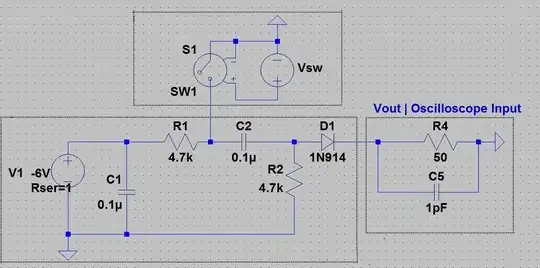We use the attached circuit for some diagnostic timing prior to doing experiments. Basically when the momentary switch is closed, from a location away from the generator box, the left side of C2 is pulled up to ground from ~-6V and C2 can discharge through the oscilloscope. The goal is to have a battery powered box driven by a switch that can close without bounce.
It seems like a p-channel mosfet could act as the switch if the gate is driven to -9V. That solves the switching, but not the debounce issue. I need the switch to close somewhat quickly, <1us, so an RC debounce doesn't seem to make the most sense. I have used monostable multivibrators before but couldn't find much about getting them to output something like the ~-9 volts I would need to drive the p channel mosfet. Are there any simple solutions that I've overlooked or would a different type of switch make more sense?
